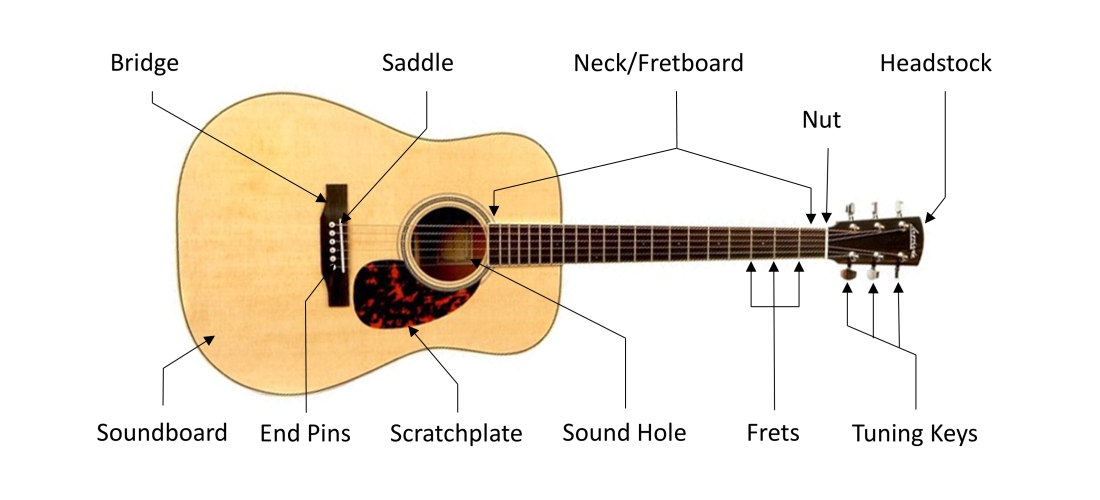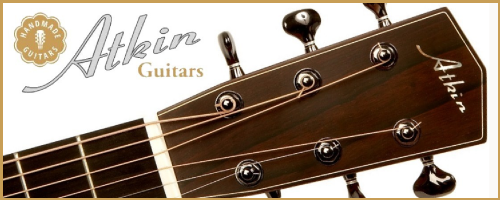An Acoustic Guitar is a guitar that makes its sound acoustically by transmitting the vibration of the strings to the air as opposed to relying on electronic amplification (see Know Your Electric Guitar). The sound waves from the strings of an acoustic guitar resonate through the guitars body creating sound.
In this article you shall be introduced to the components that make up an acoustic guitar with a brief description of what they do. Components of the Acoustic Guitar
Components of the Acoustic Guitar
Headstock -
The main function of the headstock is to house the Tuning Keys.
Tuning Keys -
Also known as machine heads hold the strings at the "head" of the instrument. They are used to tune the instrument by adjusting the tension of the strings and consequentially the pitch of the sound they produce.
Frets -
Frets divide the neck into fixed segments at intervals related to a musical framework. On a guitar, each fret represents one semitone.
Sound Hole -
The sound hole is an opening in the soundboard that helps the sound project more efficiently.
Scratch Plate -
The scratch plate also known as the pickguard is a piece of plastic that is placed on the body of the guitar. The main purpose of the scratch plate is to protect the guitars finish from being scratched by the guitar pick.
End Pins -
Also known as bridge pins are often made from wood are used to hold the string in place and help to transfer the sound from the string into the hollow body of the instrument.
Soundboard -
The majority of sound emanates from the surface area of the sounding boards on the guitar. They are often made from high quality woods called tone woods.
Bridge -
The bridge is attached to the soundboard. The endpins are inserted into the bridge and it supports the saddle.
Saddle -
The saddle sits in the bridge. It is usually made from a hard plastic or bone and supports the strings helping to transfer the vibration from the strings through to the bridge and soundboard.
Neck -
The neck of the guitar consists of the neck, fretboard, frets, nut and within it is the truss rod. The bending stress on the neck is considerable and tyhe ability of the neck to resist bending is helped by the truss rod (an adjustable metal rod) so the guitar holds a constant pitch.
Fretboard -
Also known as the fingerboard, this is the top covering to the neck that the frets are cut into and strings run over. To play the guitar, the musician presses the strings down onto a fret and fretboard changing the vibrating length of the string.
Nut -
The nut supports the strings at the headstock end of the fretboard. It is usually made from hard plastic or bone and has groves cut in it that set the string spacing and height.
Published 17th Feb 2017










